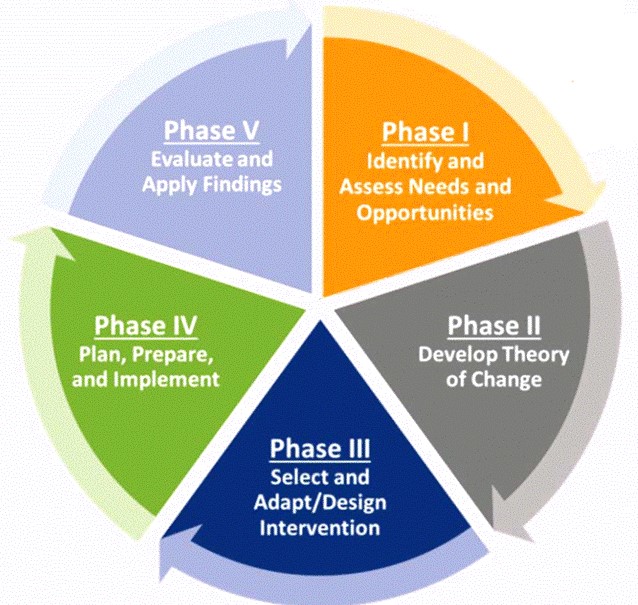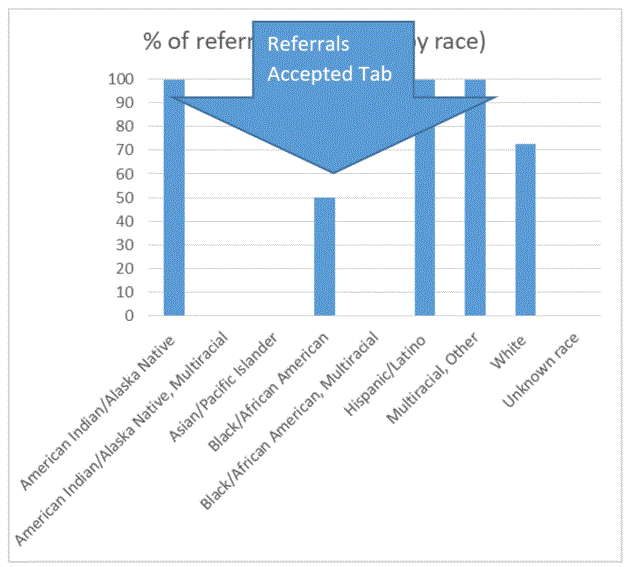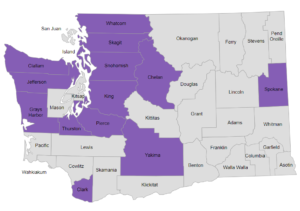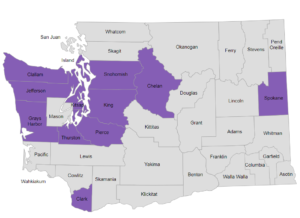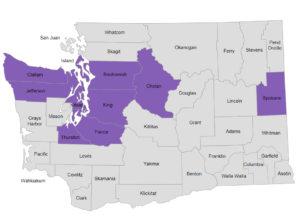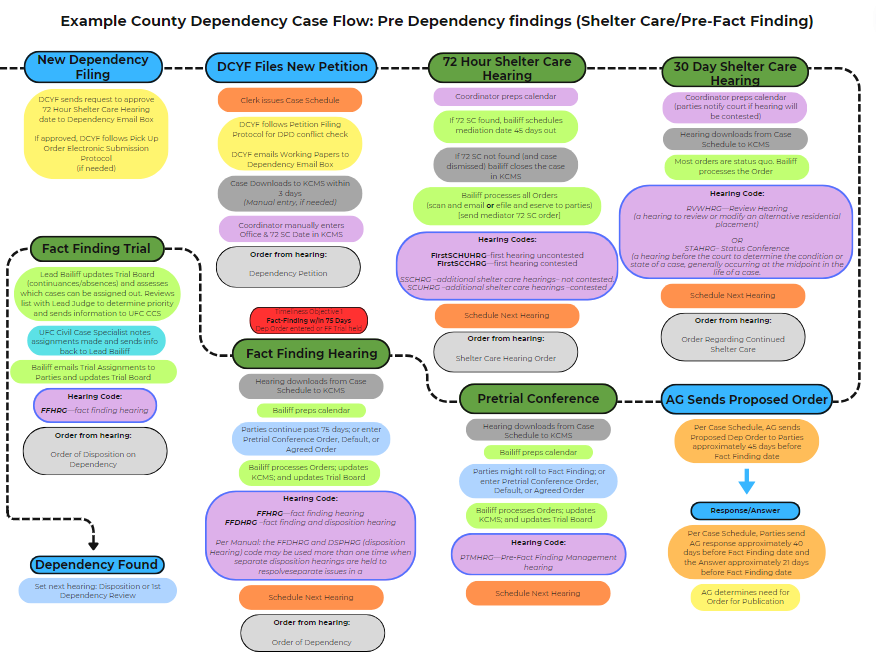Phase II: Develop a Theory of Change
Milestones: Develop and Document a theory about causes of this need
Develop a Theory of Change
In this example: Based on the review of the data and expertise of our team in analyzing this need, we know the participants in our example program are not representative of the child welfare system or of Washington’s population. Our goal is now to brainstorm ways to solve this problem and develop a pathway to improvement.
Our chosen outcome is:
In a period of one year starting Jan 2022 and ending Dec 2022, we will increase the participation of BIPoC families in our FTC.
So, how can our example program better reach families of color involved in the child welfare system? First we need to consider the possible causes.
What are possible causes of this difference in participants?
-
- Parents of color do not feel comfortable approaching the example program team because there are no persons of color on the team.
- Parents of color do not feel comfortable approaching the example program because there are parents in their community who had a bad experience in the example program.
- The team is receiving fewer referrals for families of color than White families from outside sources.
- The team accepts fewer referrals for families of color than for White families.
- Parents of color do not trust the child welfare system because of the long history of abuse towards families of color by government agencies.
What are the most likely causes?
- Representation: Our example operational team has no persons of color on the team, so it is very likely that parents of colors do not feel comfortable with the team because they don’t feel represented.
- A history of systemic racism in the courts and child welfare: Parents of color do not trust the child welfare system because of the long history of abuse towards families of color by government agencies.
- Eligibility and Bias in Acceptance: Our example team has several eligibility restrictions, meaning fewer parents are accepted than referred., It is likely that parents of color who are referred are not always accepted (you could check this for your own team under the Referrals Accepted tab of the WA performance reporting form).
- If we look at the percentage of referrals that are accepted for each race, the lowest percentage is for Black/African American parents (only 50% of referred Black/African American parents are accepted into our example program).
What are the resources our example team has to try and address the causes?
Our example team:
-
- Has the ability to add members to the team based on values like lived expertise (in the child welfare system, Substance Use Disorder, or Systemic Racism) and understanding the cultural needs of families of color that will increase representation on our team.
- Can review the reasons why referrals were not accepted and evaluate these for potential bias.
- Can review and change eligibility criteria for our example program.
- Cannot change the whole child welfare system, however we can make small changes that benefit our local system and be an example to the greater court community as we collect information about our success.
- Contact the FTC Team at AOC if their court is in Washington State, as well as Child and Family Futures for Technical Assistance to discuss further options
Summary:
- It is likely that parents of color do not feel comfortable with our example program because it is related to the child welfare system and the court system.
- It is likely that our example program’s eligibility criteria are either too strict, or our example team discusses things outside the eligibility criteria when deciding who should be accepted.
- If our example team can create a referral to acceptance process that is standardized and limited, and if our example team can create an atmosphere where parents of color feel comfortable and represented, then the future enrollment numbers may be more representative of the population involved in the child welfare system
Conclusions to Phase II
We have identified three areas of focus in our theory of change. These areas are what we as a committee, (using research, data, our expertise, and the Best Practice Standards) have decided are the areas that need change in our local court to meet our outcome goal. The three areas of focus are: representation, creating an environment of trust for BiPOC individuals in our courts, and revision of our acceptance and referral process.
Tips and Tricks for Stage II
Each team will need to critically think of the conclusions, the workload of your committee and operational team, and make sure you have the capacity to carry out your plans for change. If you have a small team, these capacity issues may require prioritizing at each stage of this process in consideration of the ability of your team and your court to meet you goals.
One way to prioritize your goals in a way that allows all team members an equitable voice in the decision is to use a liberating structure such as 1:2:4:All, Conversation Café, or 15% Solutions to help the group see each others’ viewpoints.

